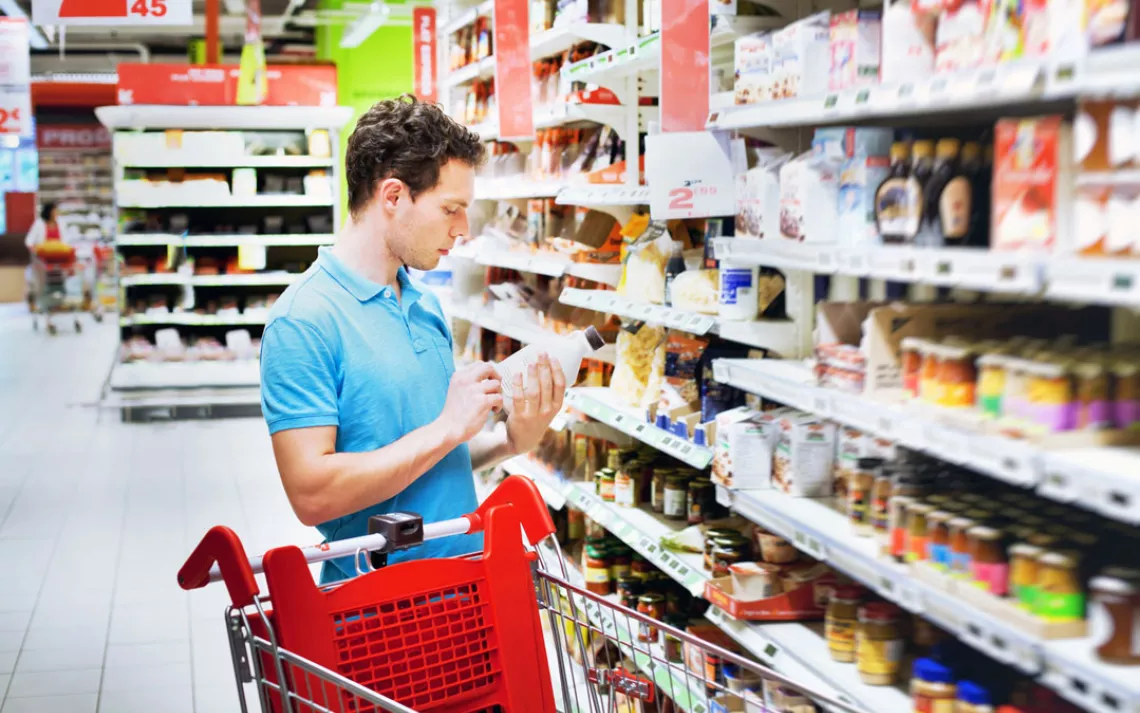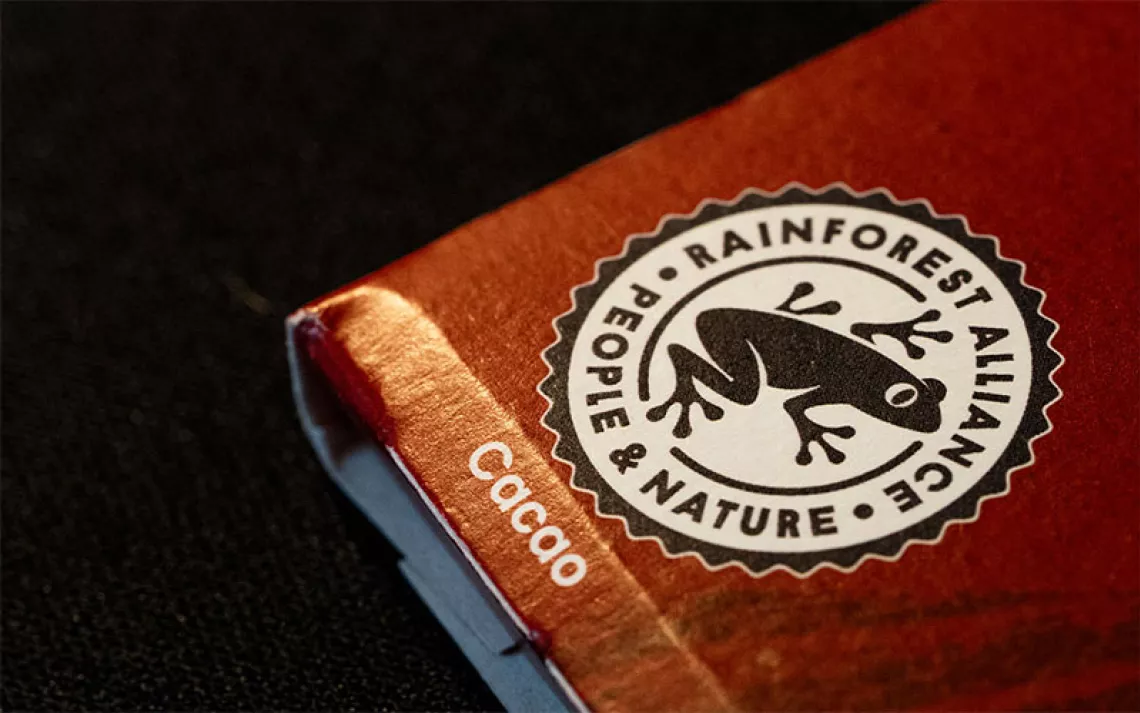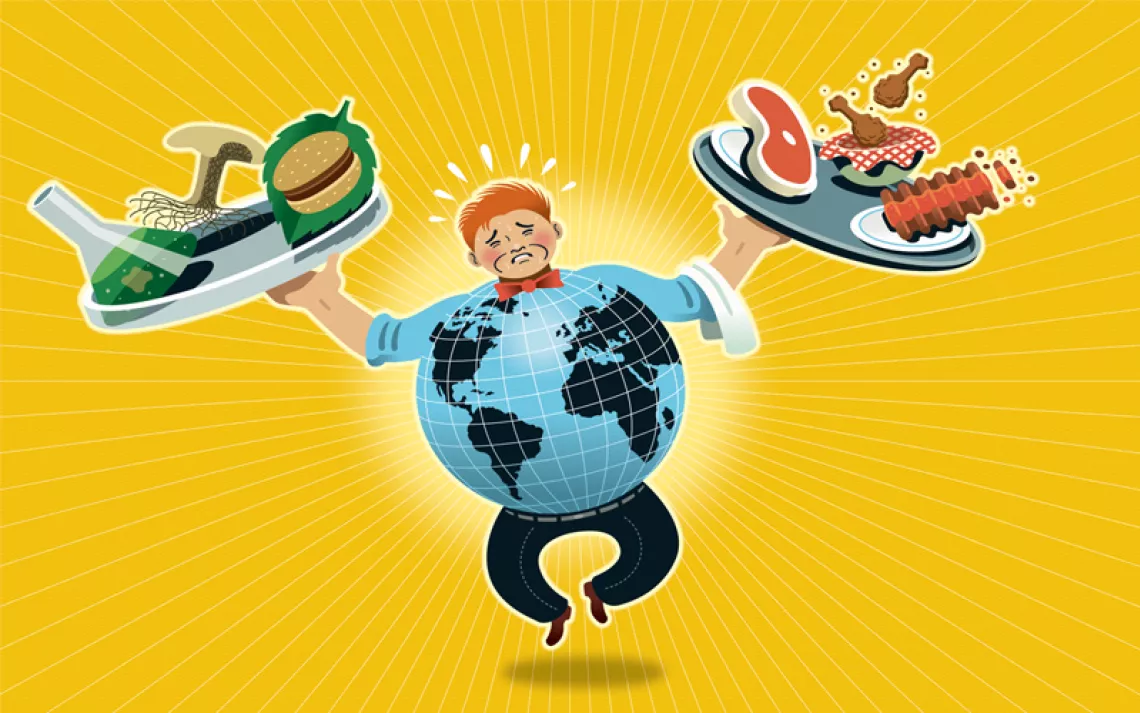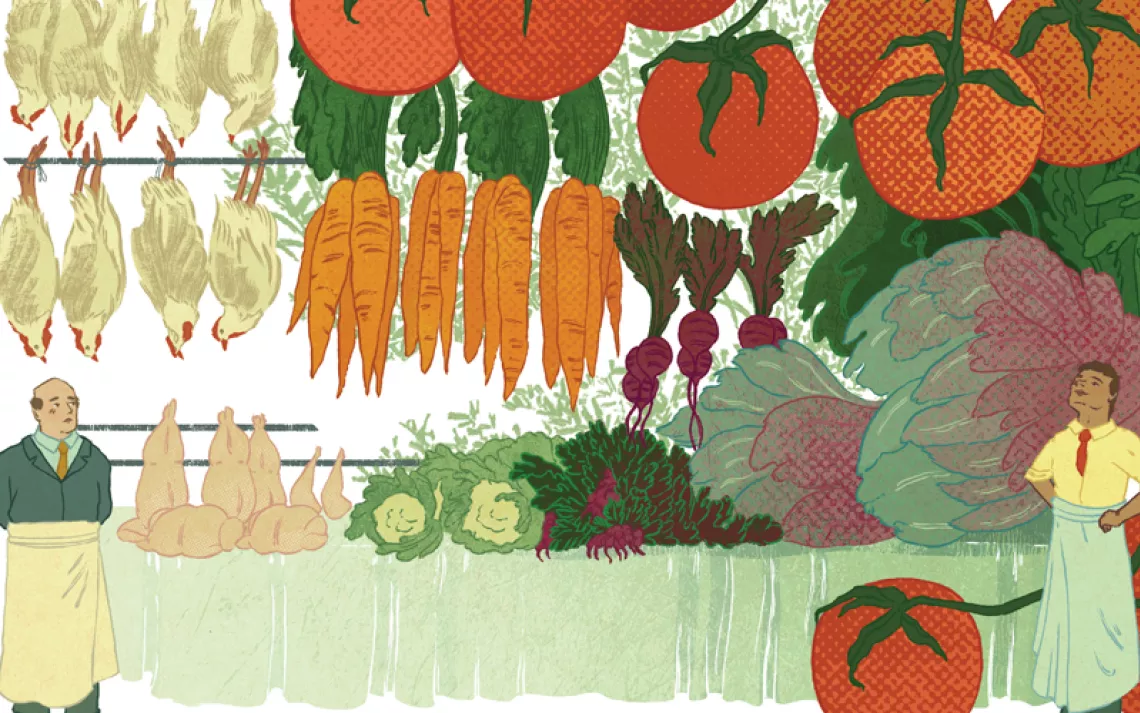A Slicker, Sneakier Wave of GMOs Goes to Market
Advocates release the first guide to educate consumers on the synthetic biology within food and personal products

Labeling hasn't caught up to GMOs 2.0 | Photo by Anya Berkut/iStock
It’s the stuff of a sci-fi tall tale: gene-spliced apples that never go brown, skincare products crafted from petri-dish algae, potatoes custom-tailored for fast-food fryers, mushrooms that never rot, and probiotics designed to make your dog’s poop banana-scented. And these are just some of the products in development thanks to synthetic biology (“synbio” for short), a new form of genetic engineering that involves changing or even creating DNA to artificially synthesize compounds, rather than extract them from natural sources—a process sometimes referred to as GMOs 2.0.
GMOs 2.0 have been popping up on the market for the past two or three years. Think back to 2014’s introduction of synthetically derived replicas of vanillin, and Monsanto’s earlier-this-month nabbing of the licensing rights to use key technology from CRISPR—a new technique through which scientists tweak a plant’s DNA so it can do things like survive droughts and never turn brown. “GMOs have been around for a couple decades, but the types of modified ingredients being produced is changing,” says Dana Perls, senior food and technology campaigner with Friends of the Earth, “and they’re hitting the market quickly and quietly—unlabeled, unregulated, and unassessed.”
Some consumers are fearful of the potential of unpredictable, GMO-related risks to human health. Environmental organizations, meanwhile, have demonstrated that widespread use of GMOs has resulted in negative consequences such as the loss of milkweed plants, essential habitats for monarch butterflies. While systems such as the U.S. third-party Non-GMO Project Verified seal provides some guidance, Perls says labeling hasn’t caught up to GMOs 2.0, which are showing up, increasingly, in consumer products. “People spent a lot of time learning about GMOs 20 years ago, back when there were very few different ways of genetically modifying an organism,” she explains. “But biotech evolves at a very rapid pace, and today there may be 30 or more techniques, and some that require new and specific types of regulations. We need to be constantly evaluating what’s least risky and most sustainable for today.”
If Perls sounds urgent, it’s because many companies are taking advantage of this labeling lag time to push GMOs 2.0 into production—which means you could very well be unwittingly consuming synthetic additives and compounds. That’s why Friends of the Earth recently teamed up with another advocacy organization, the ETC Group, to release the Shopper’s Guide to Synthetic Biology.
The first such public education material concerning synbio, this 12-page PDF was designed to raise consumer awareness. The Shopper’s Guide names specific products already on or soon headed to stores’ shelves—including a Tom Ford oil made with synthetic patchouli, a Biossance squalane moisturizer, and milk produced without animals from Perfect Day. It also outlines the ways in which GMOs 2.0 can displace small farmers by putting corporations in greater control of food systems, centralizing food systems worldwide, and raising the risk of synbio crops cross-breeding with non-GMO ones. The guide spells out how to avoid this sneaky new wave of GMOs: namely, by choosing organic goods and by demanding open communication with food suppliers. It also contains a link to download another guide, one intended for businesses seeking to keep next-generation GMOs off their shelves.
Synbio accounts for one of today’s most insidious forms of greenwashing. “Many of today’s synthetic GMOs are falsely marketed as ‘natural’ and ‘sustainable,’ and they’re infiltrating food and cosmetics before they’ve been tested for safety or labeled,” Perls says. “You have companies looking to replace truly natural, plant-based ingredients with ones squeezed out of yeast raised in a vat, fed with sugarcane or GMO corn, and labeled as plant-based and sustainable—when nothing could be further from the truth.”
Consider the definition of “natural flavoring.” According to the USDA, “natural” essentially just requires food to be processed without any additional, synthetic ingredients. “That was a reasonable definition for 1977, when it was written,” says Michael Hansen, PhD, a senior scientist with Consumers Union, the policy and advocacy arm of Consumer Reports. “But now the boundaries of synthetics have shifted—if vanilla is produced via edible yeasts and fermentation products thereof, they could meet the definition of natural flavoring, despite all the synthetic processes that went into that yeast. Likewise, you could have an animal that’s been fed genetically engineered feed, cloned, and sprayed with synthetic pesticides, but as long as the meat is minimally processed and contains no added ingredients, you could label that as natural.”
It’s why Hansen and many other consumer advocates say the word “natural” should be either re-defined or legally removed from the FDA’s lexicon. “The term is so vague that it really doesn’t mean anything, and in fact, consumers misinterpret its meaning as even higher than organic, which is why companies like to use the term,” he says. ConsideringFood Business News sited fresh natural foods as 2015’s “trend of the year,” the practice is more than a little manipulative. “Consumers aren’t empowered to make their own choices about consuming many genetically modified organisms,” Hansen says.
Synbio certainly isn’t going away. In fact, the recent spate of major agrichemical mergers (see: Monsanto and Bayer and Dow Chemical and DuPont) will likely result in the development of more genetically engineered and patented seeds. “They’ll continue to slip through existing regulatory cracks,” Perls says. “These are companies that could potentially own and profit from the entire food system, moving us further away from our ability to test and assess what goes into our products, and increasing the impact on small farmers across the world.
The key to avoiding this, she says, lies in educating consumers and companies, mobilizing allies in the food movement, and updating regulations. “Biotech regulators know they’re in desperate need of updating, but they come up against a super-powerful agricultural industry that doesn’t want to see this,” she explains. Perls adds that while the USDA is updating its regulations on how GMOs are assessed and approved (thanks to a new bill signed into law by Obama last July that gives the secretary of agriculture two years to establish a national disclosure standard for bio-engineered foods), CRISPR and many other forms of gene-editing fall outside of USDA mandates.
The implications of a largely unchecked technology that creates life itself are, to put it mildly, massive. “Synthetic biology is a huge technology platform, and consumer products are the front-line entry point,” Perls says. “If you can get these gene-edited ingredients accepted as natural and sustainable, that opens the door to a bunch of other concerning applications.”
In the meantime, the best recourse is to educate yourself. To that end, Synbiowatch, a coalition of consumer and environmental groups, is hosting a free informational webinar on synthetic biology in food and cosmetics, available October 5 at 10 A.M. PDT, 1 P.M. EDT. Check it out, and know that if a food or cosmetic product seems too wildly futuristic to be true, then it’s likely far outside the realm of natural.
 The Magazine of The Sierra Club
The Magazine of The Sierra Club







